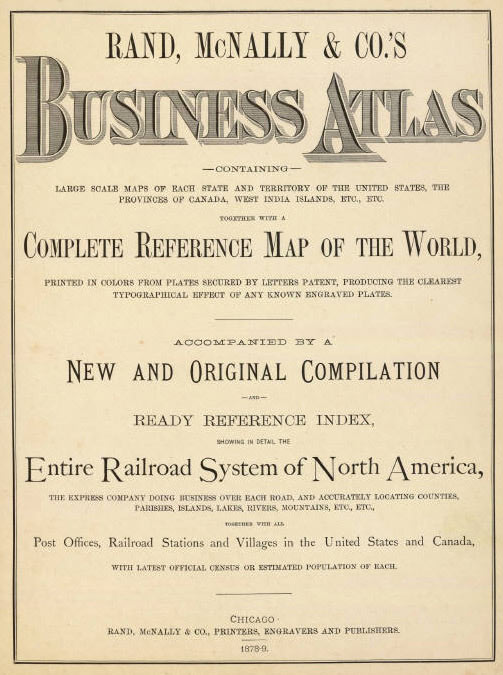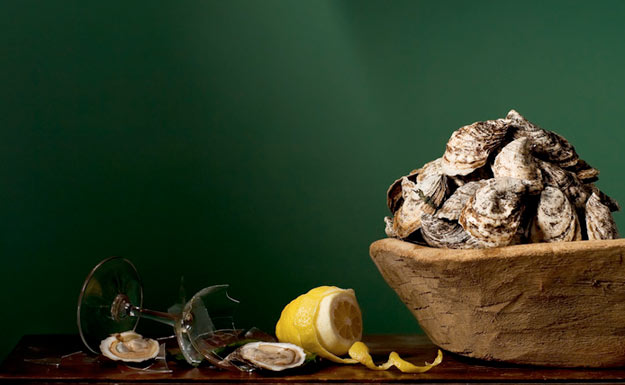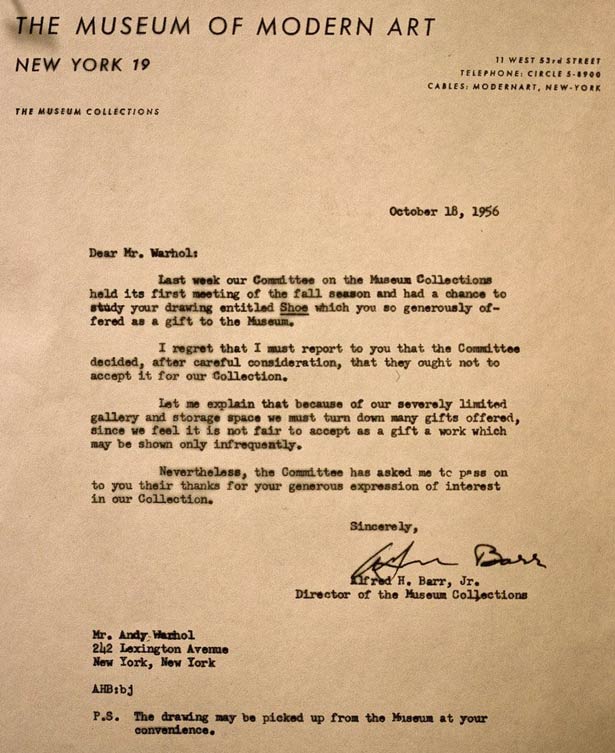Protons, neutrons, I ate a rock from the moon


New cosmetic medical devices including DIY lasers are expected to explode into a $1.3 billion market 2013, up from just $296 million in 2008, according to the analyst group Medical Insights. The growth in the market appears to be coming from light-based products that claim to either remove or grow hair on the human body. The Silk’n Hair was the first at-home laser device to be approved by the FDA, in 2006, although it didn’t come on the market until early 2008.
The laser hair removers damage the hair follicles that are in their growth phase, generally leading to some permanent reductions of body hair. DiBernardo questioned whether the lasers used in the home devices were powerful enough to get the kind of results that clinics achieve.
photo { Viviane Sassen }
When is the best time to stop renting and buy a house?
When it costs less to buy than to rent. And how do you figure that out? Find two similar houses — one for sale and one for rent — and divide the asking price by the annual rent. (…)Which is the best day of the year to make an offer on a house?
Christmas Day. Huh? Not all real estate agents agree, but those who do offer three reasons. (…)Which is the best day of the month to make an offer on a house?
The first Tuesday. Why early in the month? Because the homeowner just wrote a mortgage check for a house he no longer wants, and he doesn’t want to write another one.When is the best time to buy life insurance?
As soon as you become a parent.{ Excerpted from Mark Di Vincenzo’s Buy Ketchup In May And Fly At Noon | NPR | Continue reading }

The innovators behind Ace Hotel know nothing says full service like a good gay porn selection, which is why the hipster hotel turned to BUTT magazine to curate its new gay porn on demand service, and the editors at BUTT were more than happy to put their talents as connoisseurs of vintage porn to use.
Starting Nov. 1, guests in the hotel’s New York City and Palm Springs locals can pay for the pleasuring of tuning in and, well, you knowing, to the carefully crafted series BUTT editor Adam Baran calls “the best that porn has to offer.”
“Other times we tried to take a look at the historical angle of films like The Bigger, The Better, probably one of the best gay porn films of all times.”

I was reading Aquinas’s commentaries on Aristotle, especially his Physics. In it, Aquinas frequently gives, as an example of animals which do not have locomotion, none other than oysters. Oysters do not walk about the sands or rocks at the bottom of the sea looking for their lunch. They are carried about by water motion or what they need is brought to them by the same waves. But they are definitely alive. They are not plants drawing their needs from roots.
{ First Principles | Continue reading | Thomas Aquinas, Commentary on Aristotle’s De Sensu et Sensato }
quote { Sweet Zoo }
photo { Grant Cornett }

But we know that murder is not in fact such a random matter. It is first and foremost an interaction between two people who more often than not know each other: approximately 75% of all homicides in the United States from 1995 to 2002 occurred between people who knew each other prior to the murder (Federal Bureau of Investigation, selected years).
We also know that the victim and offender tend to resemble each other socially and demographically (e.g., Wolfgang 1958; Luckenbill 1977). Young people kill other young people, poor people kill other poor people, gang members kill other gang members, and so on.
{ Murder by structure: dominance relations and the social structure of gang homicide. | via Mind Hacks | Continue reading }

{ Moma rejection letter to Andy Warhol, 1956 | via Douglas Wilson | Enlarge }

{ Mr. Toth has built a precise replica of a first-class cabin from a Pan Am World Airways 747 in the garage of his two-bedroom condo in Redondo Beach, Calif. The setup includes almost everything fliers in the late 1970s and 1980s would have found onboard: pairs of red-and-blue reclining seats, original overhead luggage bins and a curved, red-carpeted staircase. | Wall Street Journal | Continue reading }
Don Boudreaux had an oped in Saturday’s WSJ, on “Learning to Love Insider Trading.” The economic case against banning insider trading seems strong, yet the public overwhelmingly wants bans. (…)
Even with laws against insider trading, the speculation game is and must remain ridiculously uneven. Today most inside info gets into prices before official announcements, and well-connected well-organized investment groups are vastly better equipped to find and exploit pricing errors than almost all amateurs.
{ Overcoming Bias | Continue reading }
One of the nice aspects of trying to solve investment puzzles is recognizing that even though I am not always going to be right, I don’t have to be. Decent portfolio management allows for some bad luck and some bad decisions. When something does go wrong, I like to think about the bad decisions and learn from them so that hopefully I don’t repeat the same mistakes. This leaves me plenty of room to make fresh mistakes going forward. I’d like to start today by reviewing a bad decision I made and share with you what I’ve learned from that error and how I am attempting to apply the lessons to improve our funds’ prospects.
At the May 2005 Ira Sohn Investment Research Conference in New York, I recommended MDC Holdings, a homebuilder, at $67 per share. Two months later MDC reached $89 a share, a nice quick return if you timed your sale perfectly. Then the stock collapsed with the rest of the sector. Some of my MDC analysis was correct: it was less risky than its peers and would hold-up better in a down cycle because it had less leverage and held less land. But this just meant that almost half a decade later, anyone who listened to me would have lost about forty percent of his investment, instead of the seventy percent that the homebuilding sector lost.
I want to revisit this because the loss was not bad luck; it was bad analysis.
related { Glossary of Trading Terms and Phrases. }

From L to R { Adam Cvijanovic | Ellen Altfest | Marc Swanson }
It has been a tumultuous year for Rebecca Smith, 43, who owned a well-known contemporary art gallery until last June.
The recession delivered an economic shock to the art market, and Becky’s New York City gallery struggled for months before she decided to shutter it. In the process, she came into conflict with some of the artists she worked with — she owes them money, they owe her. She moved out of her apartment and borrowed cash from her parents. She was too poor to visit her family in Pittsburgh for Christmas. (…)
Shortly after she founded the Bellwether Gallery in Brooklyn, in 1999, Becky, was the subject of a profile, in The New York Times Magazine, titled “How to Become an Instant Art Star,” and she did, indeed, become a star.
She moved her gallery to Chelsea in 2004, and maintained a frenetic pace on the international art fair circuit. She hired a gallery director, a manager and an art handler. “I felt like I was one of the members of my generation who could become one of the next representatives to major artists,” Becky said.
She specialized in emerging art, finding and cultivating cutting-edge new artists like Adam Cvijanovic, Ellen Altfest and Marc Swanson, building their careers up through gallery shows, and selling their pieces for increasingly large sums of money, mostly to rich financier-collectors. Buying the work of unknown young artists was especially appealing to Wall Streeters, because it was an accessible way to start building an art collection and it offered the possibility of “discovering” artists and making a fortune as their work shot up in value — not unlike the thrills of the stock market.
Becky ran through some numbers for me: her gallery’s rent was about $10,000 a month. Her highest overhead, when she had four full-time employees and was maintaining a hectic pace of exhibitions, ran to $75,000 — in a lean month it might have been closer to $50,000. The revenue came through the sale of art; a gallery usually takes 50 percent of the sale price.
Once sales dried up by the fall of 2008, Becky called three of her largest collectors, pleading for some business — “I tried playing it cool, and then I tried playing it direct,” she said. She recounted a typical conversation: “I need to sell you something to continue to be here,” she would tell a collector.
“I’m just not buying,” was the reply.

Compulsive hoarding is a form of obsessive-compulsive disorder (OCD), a neurobiological condition, most likely genetically based. OCD comes in a wide variety of forms, of which hoarding is only one. Compulsive hoarders may collect only certain types of things, or they may indiscriminately save everything. We are not talking here about collecting things that are valuable or important such as art, coins, or stamps. (…)
Some of the things most commonly saved include newspapers, magazines, lists, pens, pencils, empty boxes, pamphlets, old greeting cards, junk mail, old appliances, outdated books and even assorted labels, string, rubber bands, plastic containers, bottles, and bottle caps. In the most extreme cases, people have been known to save such things as empty matchbooks, used tissues, old cigarette butts, bird feathers, old cars, discarded paper cups, used aluminum foil, paper towels, lint, and hairs. Some of these sufferers will even rummage through other people’s trash, and bring home obvious junk that to them, seems quite useful or repairable. (…)
In 1932, Homer Lusk Collyer (1881–1947) purchased a building across the street at 2077 Fifth Avenue for $8,000. He planned to divide it into apartments and to rent them. This plan was never realized, as he suffered a stroke in 1933, becoming blind as the result of hemorrhages in both of his eyes. With one exception, he was reportedly never seen outside of his home again.
Homer’s brother, Langley Collyer (1885–1947), gave up his job to nurse his brother back to health. No physician was ever consulted. Langley apparently believed that the cure for his brother’s blindness was for him to eat 100 oranges a week, and to keep his eyes closed at all times, in order to rest them. The brothers possessed a large library of medical books, and it would seem that Langley felt he had the information and knowledge necessary to treat his brother.
{ OC Foundation | Continue reading }
Burglars tried to break into the house because of unfounded rumors of valuables, and neighborhood youths had developed a fondness for throwing rocks at the windows. They boarded up the windows. In an attempt to exclude burglars, Langley used his engineering skills to construct booby traps and tunnels among the collection of items and trash that filled the house. The house soon became a maze of boxes, complicated tunnel systems consisting of junk and trash rigged with trip wires. Homer and Langley Collyer lived in “nests” created amongst the debris that was piled to the ceiling.
Their gas, telephone, electricity and water having been turned off because of their failure to pay the bills, the brothers took to warming the large house using only a small kerosene heater. For a while, Langley attempted to generate his own energy by means of a car engine. Langley began to wander outside at night; he fetched their water from a post in a park four blocks to the south (presumably Mount Morris Park, renamed Marcus Garvey Park in 1973). He also dragged home countless pieces of abandoned junk that aroused his interest. In 1933, Homer, already crippled by rheumatism, went blind. Langley devised a remedy, a diet of one hundred oranges a week, along with black bread and peanut butter. He also began to hoard newspapers, so that his brother could catch up with the news once his sight returned. (…)
On March 21, 1947, an anonymous tipster phoned the 122nd police precinct and insisted there was a dead body in the house. A patrol officer was dispatched, but had a very difficult time getting into the house at first. There was no doorbell or telephone and the doors were locked; and while the basement windows were broken, they were protected by iron grillwork. Eventually an emergency squad of seven men had no choice but to begin pulling out all the junk that was blocking their way and throw it out onto the street below. The brownstone’s foyer was packed solid by a wall of old newspapers, folding beds and chairs, half a sewing machine, boxes, parts of a wine press and numerous other pieces of junk.
A patrolman, William Baker, finally broke in through a window into a second-story bedroom. Behind this window lay, among other things, more packages and newspaper bundles, empty cardboard boxes lashed together with rope, the frame of a baby carriage, a rake, and old umbrellas tied together. After a two-hour crawl he found Homer Collyer dead, wearing just a tattered blue and white bathrobe. (…) But Langley was nowhere to be found. For weeks there was no sign of Langley.
On Saturday, March 30, false rumors circulated that Langley had been seen aboard a bus heading for Atlantic City, but a manhunt along the New Jersey shore turned up nothing. Two days later, the police continued searching the house, removing 3,000 more books, several outdated phone books, a horse’s jawbone, a Steinway piano, an early X-ray machine, and even more bundles of newspapers. More than nineteen tons of junk had been removed, just from the ground floor of the three-story brownstone. Still unable to find Langley, the police continued to clear away the brothers’ stockpile for another week, removing another 84 tons of rubbish from the house.
On April 8, 1947, workman Artie Matthews found the dead body of Langley Collyer just ten feet from where Homer had died. His partially decomposed body was being eaten by rats. A suitcase and three huge bundles of newspapers covered his body. Langley had been crawling through their newspaper tunnel to bring food to his paralyzed brother when one of his own booby traps fell down and crushed him. Homer, blind and paralyzed, starved to death several days later.
{ Wikipedia | Continue reading }
The last name of the title characters of E. L. Doctorow’s new novel, “Homer & Langley,” is Collyer, and the book’s brothers do, in fact, turn out to be versions of those infamous New York pack rats, whose overstuffed Harlem brownstone made their name synonymous with obsessive-compulsive collecting.
 A cheerleader can now only walk backwards following a freakish reaction to the swine flu vaccination.
A cheerleader can now only walk backwards following a freakish reaction to the swine flu vaccination.
U.N. to deliver food aid by text message.
A Chinese company sells artificial hymens for $15.
Ice-skating bear from Russia kills circus director during rehearsals.
Man who threw feces in CA courtroom gets 31 years.
A Swedish mobile phone operator acknowledged Tuesday it was behind an elaborate meteorite hoax in Latvia and pledged to reimburse the Baltic nation for all costs spent by police, rescue and military workers in the incident.
Acoustic Kitty was a CIA project launched in the 1960s attempting to use cats in spy missions.
After nine months of being nearly invisible, George W. Bush made his debut in his latest incarnation: motivational speaker. Bush, who is writing a book about the dozen toughest decisions he had to make, used much of his 28 minutes onstage to talk about lighter topics such as picking out a rug design for the Oval Office that reflected his “optimism.”
New study shows that raising kids makes married people happier.
A warm room makes people feel socially closer.
Was our oldest ancestor a proton-powered rock? A few researchers, including Russell, have been rethinking the origin of life in the light of Mitchell’s ideas. They think the most counter-intuitive trait of life is one of the best clues to its origin.
Amputees who feel phantom limbs can learn to do physically impossible body tricks.
 Mona Lisa’s smile a mystery no more. It happens because our eyes are sending mixed signals to the brain about her smile.
Mona Lisa’s smile a mystery no more. It happens because our eyes are sending mixed signals to the brain about her smile.
Just 1 cigarette has harmful effect on the arteries of young healthy adults.
Economy grows by 3.5 percent, signals recession may have ended, though analysts warned that it was fueled largely by government recovery programs. More: The 1st question to ask about GDP is the degree of inorganic/artificial gains.
If we look at the 5 factors NBER considers — GDP, real income, employment, industrial production, and wholesale-retail sales — it’s somewhat ambiguous to say unequivocally that the recession is over.
Can Google stay on top of the web? As Bing, Facebook, Twitter, and less well-known upstarts nip at its heels, Google has hundreds of wizards racing to come up with smarter answers. Related: 10 things Google has taught us.
Icelandic collapse complete. McDonald’s is fleeing the country. Related: Iceland crushed by Europe [map].
U.S. throw away enough food to feed the entire world. New York City alone has an annual surplus of about 50 million pounds of food.
North Carolina sea levels rising 3 times faster than in previous 500 years, Penn study says.
Overpopulation is often singled out as the planet’s root problem. If only it were that simple. Leading thinkers on population can’t agree on what the answers – or even the questions – are.
Pollution in China. [pics]
RightRides offers women, LGBTQ and gender queer individuals a free, safe, late night ride home on Friday and Saturday nights from 11:59 PM - 3 AM, (early Saturday or Sunday morning) in up to 45 NYC neighborhoods across four NYC boroughs. More info. [via Newyorkshitty.com]
82-story MoMA tower approved by City Council.
WIRED magazine will open its annual holiday pop-up shop Nov. 21 in the Meatpacking District.
Urs Fischer at the New Museum. [pics of the opening] Also: Rock photographers at the Brooklyn Museum. And next week: Dan Flavin at David Zwirner. [Press release | PDF]
A graphic history of newspaper circulation over the last two decades. Related: The plunge in U.S. newspaper circulation is accelerating. Average weekday circulation at 379 daily newspapers fell 10.6 percent.
My life and times in independent publishing.
 The painter James Rosenquist’s new memoir is an unexpected treat: a ruddy and humble book.
The painter James Rosenquist’s new memoir is an unexpected treat: a ruddy and humble book.
11 Scariest Horror Movies of All Time by Martin Scorsese.
Paul Bley Trio, Ballads, 1971.
Five artists recreated Leonardo Da Vinci’s The Last Supper out of 4,050 Rubik’s cubes.
The odds an adult is afraid of spiders or insects are 1 in 3.7.
Automatic poultry deboner operation [video].
Visual illusions can be caused by imagination.
Optical illusions show how we see. [TED video]
“The break of the curveball,” best visual illusion of the year.
Subodh Gupta [the Damien Hirst of Delhi, the Sub-continental Marcel Duchamp.]

Semantic satiation (also semantic saturation) is a cognitive neuroscience phenomenon in which repetition causes a word or phrase to temporarily lose meaning for the listener, who can only process the speech as repeated meaningless sounds.
photo { Richard Kern }

The experiment was extreme, certainly, but the neuroscientist behind the study, David Eagleman at Baylor College of Medicine in Houston, Texas, is no Dr Strangelove. When we look back at scary situations, they often seem to have occurred in slow motion. Eagleman wanted to know whether the brain’s clock actually accelerates - making external events appear abnormally slow in comparison with the brain’s workings - or whether the slo-mo is just an artefact of our memory.
It’s just one of many mysteries concerning how we experience time that we are only now beginning to crack. “Time,” says Eagleman, “is much weirder than we think it is.”
{ NewScientist | Continue reading }
Another notable difference between sight and hearing concerns space. One of the most striking aspects of visual experience is its rich spatial content. We speak of a visual field, a panorama populated in detail with colours and shapes. In contrast, the notion of an auditory panorama is more foreign. Perhaps time is to audition what space is to vision.
{ Casey O’Callaghan/The Pilosophers’ Magazine | Continue reading }
photo { Josef Hoflehner | via A Photography Blog }
As most of you know, Cracked.com is actually my night job. My real job is, and has been for the last several years, Chief Editor in Chief at O’Brien & “Sons” Erotic Fiction Publishing House. (…) I’m going to list all the important steps to writing great Erotic Fiction, everything that separates the un-publishable from the publishable. (…)
I can’t tell you how many times I’ve rejected the same, stale Erotic Fiction premises (EroFicPre). A pizza delivery guy enters and seduces with a housewife. A rich prince sweeps a poor, delicate woman off of her feet and into his bed. A painter is so overcome with the beauty of his model that he abruptly stops his work and romances her/masturbates in front of her. A vampire and the twins from that Harry Potter movie fuck in a cave, somewhere. A stale premise won’t get your foot in the door, which is why originality is the single most important part of Erotic Fiction.
The Erotic Fiction Community (EroFicCom) is overrun with these premises. Surprise us!
At the zoo!
Well, I normally only fuck tigers, but I think I can make an exception for a beautiful lady.
Erotic science fiction?
Laser sounds! Laser sounds!
“Be Warned, Earth Woman, the Gargamite invasion is upon us!”
Laser sounds, a spaceship.
“Their air is toxic to us, please allow me to insert the antidote all up in your ass!”
Ass laser sounds!

Research has shown that people can more easily learn a new language at a younger age. A new study extends this phenomenon to the language of marketing. In speed-of-recognition tests on college students and senior citizens, researchers found that exposure to brand names at younger ages increased brand familiarity in the present. Even brand names that had been extinct for decades were recognized more quickly among seniors than newer brands. According to the authors, “the current findings indicate that there should be a considerable advantage to acquainting children with brand names, even if the products in question are ones they will not purchase or be interested in until later in life.”
{ The Boston Globe }
photo { Cass Bird }